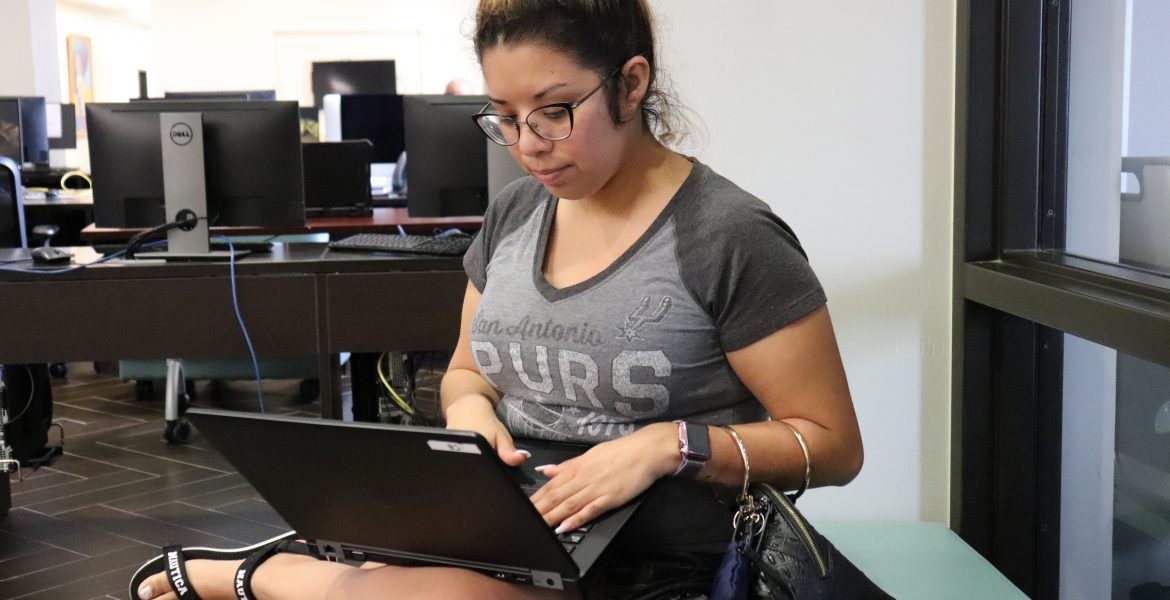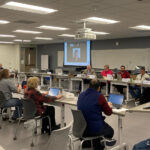Texas A&M University-San Antonio is giving students access to technological resources as the campus transitions into remote instruction.
In response to A&M-San Antonio’s switch from face-to-face classes, President Cynthia Teniente-Matson said the university has been proactive in obtaining devices to maintain equity among students.
“We don’t want anybody to be disadvantaged or to be left behind,” Matson said March 18. “So to those students we are doing our best to reach out to them.”
Students can check out laptops and mobile hotspots with their student ID 8 a.m.-5 p.m. Monday-Friday in Room 223 of the Central Academic Building.
Approximately 1,000 mobile hotspots and 200 laptops will be available for students, said William Griffenberg, chief information officer and associate vice president, IT.
Griffenberg said a survey was sent out roughly a month ago to students and faculty to find out how many people lacked technological resources. However, the results have not come in yet.
Griffenberg said his calculations were modeled closely on a statistic from San Antonio’s largest school district. Northside Independent School District, with 106,700 students in 2018-2019, is the city’s largest school district, according to the National Center for Education Statistics.
The statistic showed that 10% of students do not have home internet access. Using this as a baseline, Griffenberg estimated that A&M-San Antonio should have a mobile hotspot inventory to provide for more than 10% of its students.
He gauged 10% of A&M-San Antonio’s students, which he calculated to be approximately 700, then added 300 as a precaution, Griffenberg said.
As of March 19, roughly 70-75 laptops and 65-70 mobile hotspots had been checked out, Griffenberg said.
Criminal justice sophomore Marlena Mendoza checked out a laptop and mobile hotspot on March 19.
Mendoza said she does not have home internet access as she lives in Somerset, in an area with poor connection.
She found out the school was providing these resources through a Blackboard announcement March 18 from Dr. Karen Kalmbach, her forensic psychology professor, and through an email from IT, Mendoza said.
Prior to A&M-San Antonio’s remote transition, she used her grandmother’s computer and internet. Her grandmother lives in San Antonio in an area with good reception, Mendoza said.
“It kind of happened at a good time because I just got a puppy. I need to potty train him. So I thought, ‘OK, this is good. I have time to potty train now,’” said Mendoza.
Between potty training her new Husky, Naruto, she plans to continue doing her work at her grandmother’s using the loaners. The mobile hotspot has a spotty connection at her home in Somerset, Mendoza said.
In addition to the loaner devices, campus currently remains open. Students will have access to campus resources, unless announced otherwise, said Griffenberg.
Throughout this time, students are encouraged to continue practicing social distancing.
There are also resources for home internet access through providers including Spectrum and AT&T.
Charter Communications, Spectrum’s parent company, announced its “Student Remote Educational Offer.”
The offer consists of 60 days of free broadband and Wi-Fi to households with K-12 or higher education students. Parents and students can enroll by calling 1-844-488-8395.
AT&T offers an online application for two months of free service to eligible households through Access from AT&T.
For questions relating to loaner devices contact Jessica Nino, ITS Procurement Manager, at 210-784-4361 or jessica.nino@tamusa.edu.
Brigid Cooley contributed to this story.







